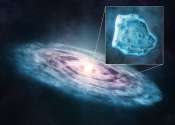Astronomers solve the case of missing carbon monoxide in protoplanetary disks
Astronomers frequently observe carbon monoxide in planetary nurseries. The compound is ultra-bright and extremely common in protoplanetary disks—regions of dust and gas where planets form around young stars—making it ...









